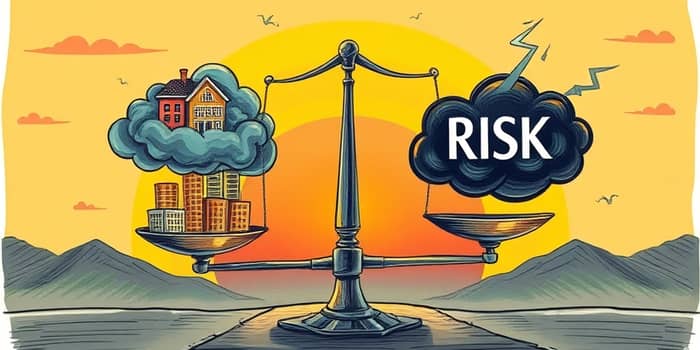
In today’s complex financial landscape, mastering the balance between risk and reward is essential for investors and organizations alike. This article outlines a structured, actionable approach to assess assets, optimize portfolios, and build resilience.
Effective asset assessment demands clarity, rigor, and adaptability. By integrating diverse methodologies and leveraging cutting-edge tools, decision-makers can navigate uncertainty and capture opportunity.
At its core, the relationship between risk and reward reflects the principle that higher potential returns often accompany greater uncertainty. The risk pyramid captures this dynamic visually, placing stable, low-yield instruments like government bonds at the base and speculative, high-growth assets such as emerging-market equities at the apex.
Risks manifest in various forms, each influencing asset value differently:
Selecting the right methodology depends on data availability, time constraints, and the decision’s criticality. Quantitative and qualitative techniques each offer unique advantages:
Quantitative methods leverage statistical analysis, historical performance, and probabilistic models. They excel when robust financial data is available. In contrast, qualitative approaches draw on expert judgment, scenario planning, and stakeholder input, proving invaluable when time or data are limited.
An asset-based approach focuses on identifying vulnerabilities tied to physical and digital assets, often aligning with frameworks such as ISO 27001. Meanwhile, threat-based assessments prioritize external actors and potential attack vectors, suitable for organizations facing targeted risks.
The risk matrix remains a cornerstone tool, plotting likelihood against impact. Typical matrices use color coding—green for low risk, yellow for moderate, and red for high—to present a clear visual hierarchy.
Likelihood categories range from “highly unlikely” to “almost certain,” while impact scales span from “negligible” to “catastrophic.” Combining these dimensions helps prioritize mitigation efforts toward the most pressing threats.
Effective assessment begins with comprehensive asset identification. Both physical (machinery, real estate) and non-physical (intellectual property, brand reputation) assets require evaluation, examining condition, replacement cost, and strategic importance.
Specialized asset management maturity models, such as the National Assessment Framework, benchmark organizational processes across governance, lifecycle management, and performance measurement.
This framework integrates risk tolerance, time horizon, and advanced modeling to inform allocation decisions. Key steps include:
Monte Carlo simulations generate thousands of potential market scenarios, offering probabilistic forecasts that guide strategic positioning. Coupling these insights with dynamic risk allocation ensures portfolios evolve in response to new data and shifting market conditions.
Global asset managers often illustrate success through disciplined risk frameworks. For instance, a large pension fund allocated 60% to fixed income and 30% to equities, reserving 10% for alternative assets. By running quarterly Monte Carlo analyses, the fund adjusted allocations ahead of interest rate shifts, preserving returns while mitigating downside.
In the corporate sphere, a manufacturing firm adopted an asset-based risk assessment to secure its supply chain. By mapping critical equipment and digital systems, the company invested in redundant systems and robust cyber defenses, reducing operational downtime by 40% over two years.
To sustain effective asset assessment, organizations should:
Embedding a culture of ongoing evaluation and adjustment transforms risk management from a static exercise into a proactive, strategic capability.
Balancing risk and reward is an ongoing journey requiring discipline, insight, and flexibility. By deploying structured risk assessment methodologies, leveraging advanced simulations, and fostering a culture of continuous monitoring, investors and organizations can navigate uncertainty with confidence.
Embrace this practical framework to unlock sustainable growth, protect critical assets, and transform risk into opportunity.
References













